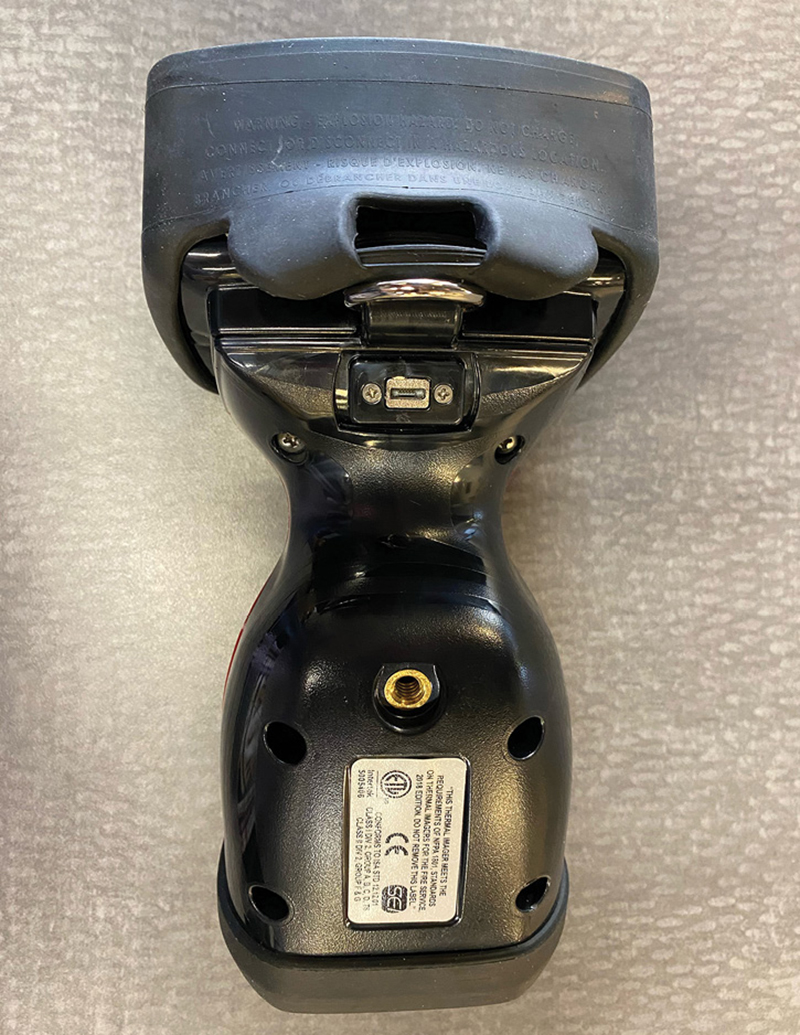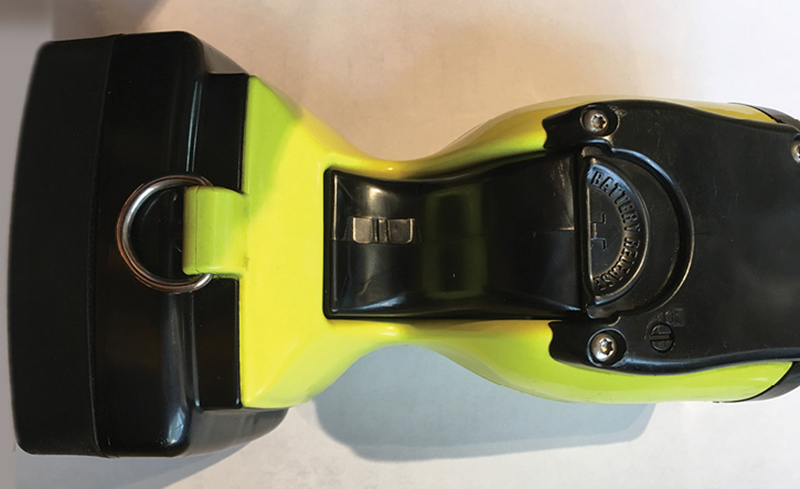What do tablets, laptops, Apple iPads, iPhones, Samsung Galaxy phones, and Motorola Moto G phones all have in common?
All these electronic devices use nonremovable lithium-ion batteries. The old days, when we had a spare battery to carry around with us for our cell phones, are gone with today’s newer technology.
Using an internal lithium-ion battery in thermal imagers (TIs) for the fire service offers several advantages over replaceable batteries:
- Enhanced durability and reliability: Internal lithium-ion batteries are designed to withstand rugged environments, ensuring better resistance to shock, vibration, and extreme temperatures. This durability enhances the overall reliability of TIs, critical for firefighters who often work in harsh conditions. There is no risk of the battery becoming detached or losing connection, ensuring uninterrupted usage during critical situations.
- Seamless integration and compact design: An internal battery allows for a more compact and streamlined TI design. This integration enables the device to be lighter and more comfortable to manage during firefighting operations.
- Improved safety: Lithium-ion batteries have built-in safety mechanisms to prevent overcharging and overheating, reducing the risk of fire or explosion, which is crucial in high-risk firefighting scenarios.
- Consistent performance: Internal lithium-ion batteries provide a consistent power supply to TIs, ensuring stable performance and accurate readings throughout a device’s lifespan. This consistency is essential for making critical decisions during firefighting operations.
- Longer battery life: Lithium-ion batteries offer a longer operational life compared with replaceable batteries. A single charge can power the TI for an extended period, reducing the need for frequent battery replacements in the field.
- Reduced maintenance: With an internal battery, there are fewer external components and connections, leading to reduced maintenance needs and fewer chances of damage to the battery, charging ports, or vehicle powerhouse stations.
- Improved water and dust resistance: Integrating the battery within the TI enhances its overall water and dust resistance, ensuring the device remains functional even in challenging environmental conditions. This is important for fire service use, as firefighting often involves encountering water or other liquids.
- Faster charging: Internal lithium-ion batteries often support fast-charging technology, enabling firefighters to recharge the TI swiftly during breaks, ensuring the device is always ready for use.
- Integrated charging solutions: Many nonremovable lithium-ion batteries come with integrated charging solutions, such as USB ports or wireless charging options. This makes it easier for firefighters to recharge the TIs conveniently and efficiently.
- Ergonomic design: Integrating the battery internally allows manufacturers to design TIs with better weight distribution, making them more ergonomic and less fatiguing for firefighters during prolonged use.
- Cost-effectiveness: Although initial costs may be higher for TIs with internal lithium-ion batteries, their longer operational lifespans and reduced maintenance requirements can result in long-term cost savings compared with frequently replacing replaceable batteries.
- Environmentally friendly: Lithium-ion batteries are generally more environmentally friendly than other battery types, as they produce less waste because of their longer lifespan and recyclability.

1 A TI with a wireless charging nonremovable lithium-ion battery and showing an auxiliary USB charging port. (Photos courtesy of Bullard.)

2 A TI with a removable NiMH battery and exposed battery contacts.
Here are several disadvantages of using replaceable batteries over internal lithium-ion batteries in TIs for the fire service:
- Limited battery life: Removable batteries have a limited capacity compared with built-in rechargeable batteries. This means that firefighters may need to carry additional batteries or chargers to ensure continuous TI operation during long operations.
- Extra weight: Additional batteries add weight to firefighters’ gear, which can be burdensome, especially when they already carry several other essential tools and equipment. This can increase fatigue and hinder mobility during firefighting operations.
- Increased maintenance: Removable battery compartments provide an additional area where dirt, dust, or moisture can enter, potentially causing damage or reducing the TI’s overall lifespan. Regular maintenance, including cleaning and inspection, becomes crucial to ensure the TI’s longevity and optimal performance.
- Risk of loss or damage: Removable batteries can be misplaced or lost during operations, especially in high-stress situations where firefighters may need to quickly remove or swap batteries. Additionally, if not managed properly, batteries may get damaged because of drops, impacts, or exposure to extreme conditions.
- Environmental impact: Removable batteries require regular replacement, which can contribute to electronic waste if not disposed of properly. This disposal process needs to comply with regulations to minimize the environmental impact.
- Inconsistent performance: Removable battery performance can degrade over time, leading to inconsistencies in power supply. This may result in sudden shutdowns or reduced TI efficiency, which can impact a firefighter’s effectiveness during critical moments.
Overall, using internal lithium-ion batteries in TIs for the fire service provides numerous benefits, including improved reliability, safety, performance, and cost-effectiveness, making them an alternative for firefighting professionals.
MANFRED KIHN is a 19-year veteran of the fire service, having served as an ambulance officer, emergency services specialist, firefighter, captain, and fire chief. He has been a member of Bullard’s Emergency Responder team since 2005 and is the company’s fire training specialist for thermal imaging technology. He is certified through the Law Enforcement Thermographers’ Association (LETA) as a thermal imaging instructor and is a recipient of the Ontario Medal for Firefighters Bravery. If you have questions about thermal imaging, email him at Manfred_kihn@bullard.com.

